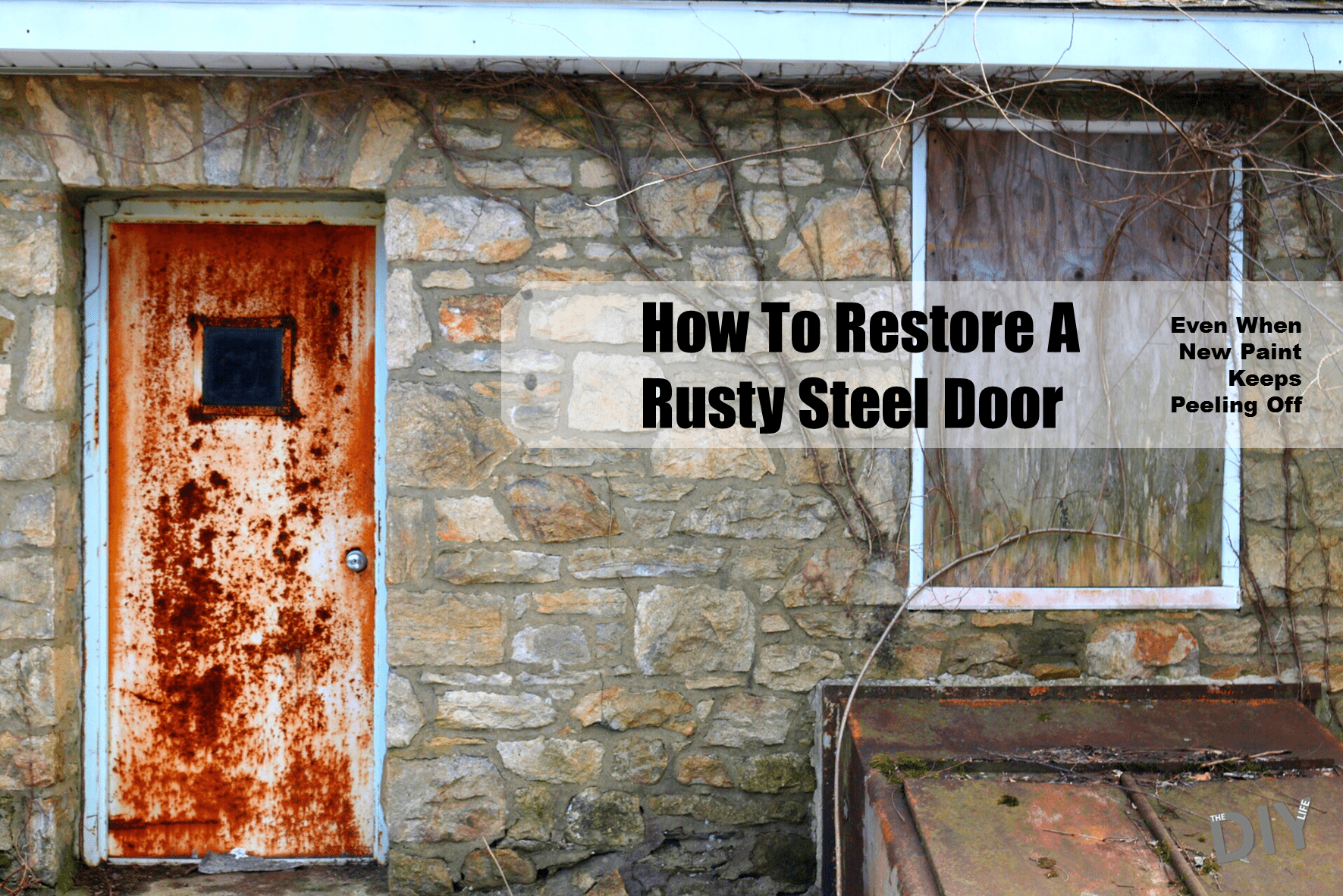Do you have an old steel door on a shed or a garden gate which you have tried to restore and is not holding its coat of paint anymore? The problem is due to saponification. Over the years, moisture has worked its way beneath the primer and formed zinc oxide. The oils from the new layers of paint react with this oxide to form a soap which rapidly deteriorates the paint film and the paint layer breaks down and loosens.
What You Will Need To Restore Your Steel Door
- Wire Brush
- Course and Fine Sandpaper (80 to 240 grit)
- Prep & Etch Product
- Acrylic Primer for Galvanised Metals or Plastics
- Acrylic Top Coat
- Spray Gun & Compressor or Large and Small Paint Brushes
How To Restore Your Steel Door
The solution is to strip the paint down to the bare metal again. Sand all of the rough and rusted edges down until the shiny metal beneath is exposed. Start by using a wire brush on any rusted areas and remove as much of the rust as possible. Now begin sanding with a course grit (80 to 120) sand paper and work your way down to a finer grit (180 to 240) to a smooth and shiny bare metal finish.
Once your door or gate is rust and paint free, it’s time to build the layers back. Start off with a prep and etch product which is essentially a diluted phosphoric acid. Brush it all over the exposed steel and allow it to set for around half an hour. Rinse it off and then allow the door or gate to dry off thoroughly in a hot place or in the sun.
Once the door is completely dry, prime it with a high performance acrylic primer made for surfaces which have adhesion problems, look for a primer made for vinyls, plastics and galvanized metals. Make sure you prime all of the intricate edges, gaps and grooves. This step is the most important to ensure a lasting surface finish on your newly refurbished door. A spray gun works best for applying primer, if you don’t have a spray gun, use a large paint brush for the large surface areas and a fine paintbrush for the edges and detail work.
Finally finish the door off with two coats of a good quality exterior acrylic top coat. The reason you are now using an acrylic top coat instead of an enamel paint is because there will likely still be very light remnants of zinc oxide on the steel and the oils in the enamel paint will again react with the oxide and the same problem will reoccur. Using a water based paint removes the oils from the paintwork and the saponification reaction can’t occur.
Allow the coats of paint to dry fully and your door will have a new long lasting paint finish.
Did this guide help you? Do you have any other tips and tricks to get rid of rust on steel doors? Let us know in the comments section below.
Share This Tip:
Cover Image: Rusted Shed Door by Alexis Lewis Used And Modified Under CC BY 2.0



Can you use a power washer to remove the loose paint coming off.
A power washer would probably remove the flaking paint, but won’t remove the paint which still has a reasonable bond strength with the door.
What are some specific acrylic products that you are recommending?